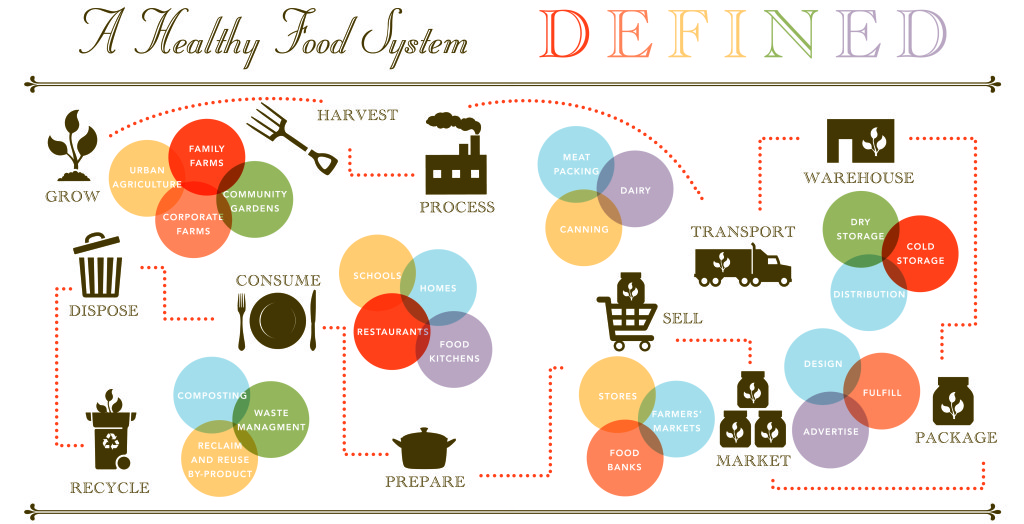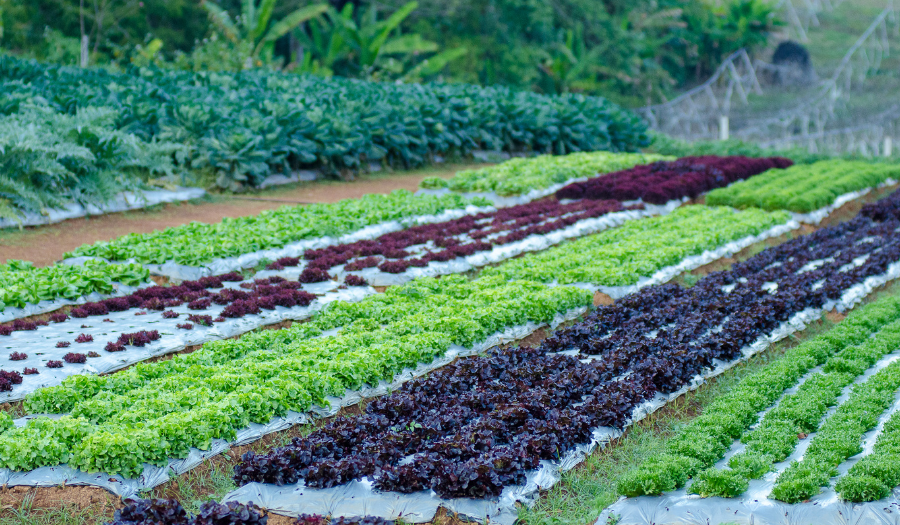Food Systems

Interested in Learning About the Food System First Hand?
The University of Kentucky Food Connection is an applied food systems center that serves farmers, food producers, students, and community members by supporting the development of vibrant and sustainable food systems on our campus and across Kentucky.
Food Systems
Sustainability is a process that implies that activities are ecologically sound, socially just, and economically viable, and that they will continue to be so for future generations. [1]
Sustainable Agriculture is defined as an integrated system of plant and animal production practices having a site-specific application that will over the long term:
- Satisfy human food and fiber needs,
- Enhance environmental quality and the natural resource base upon which the agricultural economy depends,
- Make the most efficient use of nonrenewable resources and on-farm resources and integrate, where appropriate, natural biological cycles and controls,
- Sustain the economic viability of farm operations, and
- Enhance the quality of life for farmers and society as a whole.
- The basic goals of sustainable agriculture are environmental health, economic profitability, and social and economic equity (sometimes referred to as the 18 Sustainable, Resilient and Healthy Food & Water Systems Term Definition “three legs” of the sustainability stool). [2]

A Sustainable Food System is one that conserves and renews natural resources, advances social justice and animal welfare, builds community wealth, and fulfills the food and nutrition needs now and in the future.
Statistics
In a world where there is enough food, too many men, women, and children across the globe struggle to have adequate access to a healthful food supply.
- 795 million people in the world do not have enough food to lead a healthy, active life. That’s about 1 in 9 people on earth.
- 12.9 percent of the population is undernourished.
- Asia is the continent with the highest number of people who are hungry.
- Sub-Saharan African has the highest percentage of the population who are undernourished. [3]
- In 2016, an estimated 1 in 8 Americans were food insecure, equating to 42 million Americans, including 13 million children. [4]
- More than 750,000 Kentuckians, 17% of the state’s population, do not always know from where their next meal will come.
- One in four of Kentucky’s children lack consistent access to enough food for a healthy, active lifestyle. [5]
-
43% of surveyed UK students experienced some level of food insecurity
- 24% experienced low food security
- 19% qualified as hungry, meaning they experienced very low food security
References
- http://www.uky.edu/sustainability/
- https://sustainableagriculture.net/about-us/what-is-sustainable-ag/
- https://www.wfp.org/publications/2019-hunger-map
- Alisha Coleman-Jensen, Matthew P. Rabbitt, Christian A. Gregory, and Anita Singh. 2017. Household Food Security in the United States in 2016, ERR-237, U.S. Department of Agriculture, Economic Research Service.
- Feeding America. Map the Meal Gap 2016.
Connect With Us
Food Systems & Hunger Studies
Dr. Makenzie Barr-Porter
Certificate Director
212 Funkhouser Building
Lexington, KY 40506
859-257-1573


